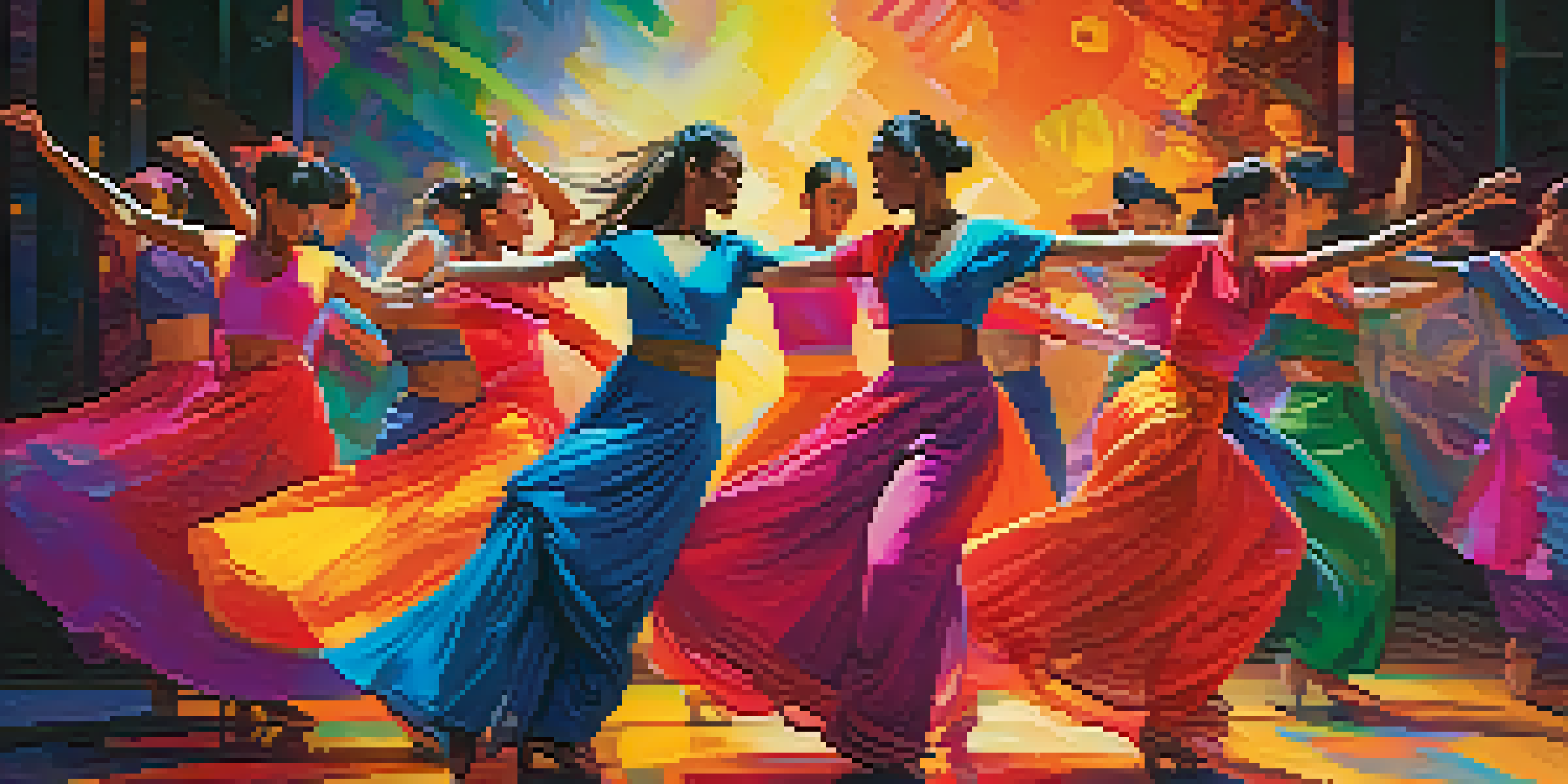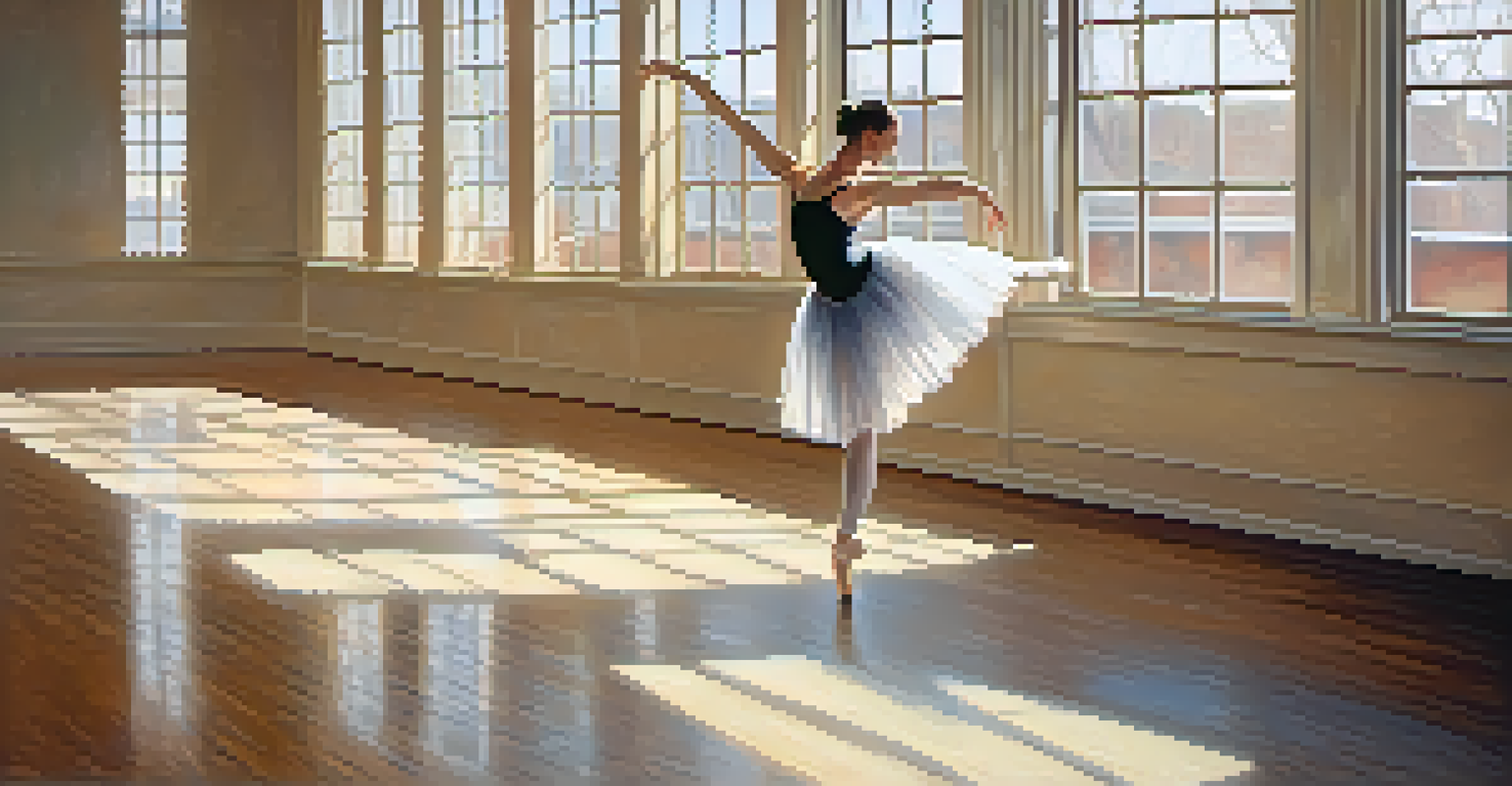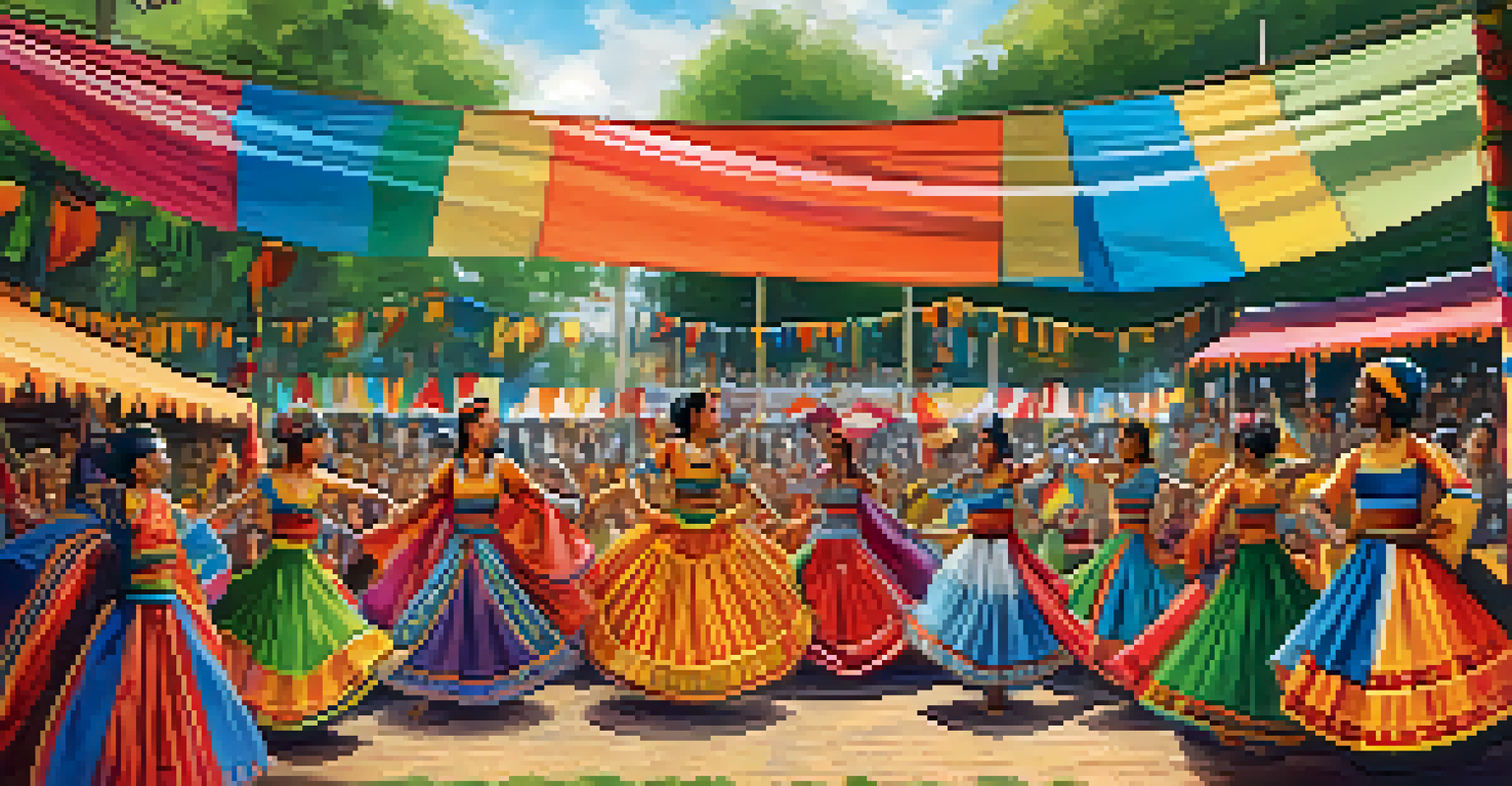The Evolution of Dance: Merging Tradition with Modern Techniques

Understanding the Roots of Dance Traditions
Dance is one of humanity's oldest forms of expression, deeply rooted in cultural rituals and celebrations. Many traditional dance forms, such as ballet, flamenco, and Kathak, have their origins in specific historical contexts and societal norms. These dances often tell stories, convey emotions, or celebrate significant events, creating a rich tapestry of heritage. As we examine these roots, we find that dance is not just movement but a reflection of the cultures from which it springs.
Dance is the hidden language of the soul.
For instance, ballet originated in the Italian Renaissance courts and evolved into a theatrical art form in France and Russia. On the other hand, African dance often incorporates community and spiritual elements, showcasing a connection to ancestry and traditions. These diverse styles highlight the importance of cultural identity and history in shaping dance as we know it today.
As we appreciate these traditions, we also recognize their vulnerability to change. While they provide a foundation for contemporary dance, the influence of modern techniques and trends can sometimes overshadow these rich histories. This evolution raises important questions about how we preserve traditional forms while embracing innovation.
The Influence of Modern Techniques on Traditional Dance
Modern dance techniques, such as contemporary and hip-hop, have dramatically influenced traditional forms, creating exciting hybrids. Dancers today often incorporate elements like improvisation, floor work, and dynamic movements, which can change the narrative and presentation of traditional dances. For example, a classical ballet performance may now feature hip-hop-inspired choreography, bringing a fresh perspective to an age-old art form.

This fusion not only attracts new audiences but also challenges dancers to expand their skill sets. As they blend styles, dancers find themselves exploring new ways to express emotions and tell stories that resonate with contemporary themes. This cross-pollination of techniques fosters creativity and allows for a more dynamic performance experience.
Dance as Cultural Expression
Dance reflects cultural identities and histories, showcasing diverse traditions that tell stories and celebrate significant events.
However, this blending raises questions about authenticity and cultural appropriation. Dancers and choreographers must navigate these waters carefully, ensuring they honor the traditions while innovating responsibly. Balancing respect for the past with the excitement of modernity is crucial in this ever-evolving dance landscape.
The Role of Technology in Dance Evolution
In recent years, technology has revolutionized the world of dance, introducing new tools and platforms for creative expression. From video editing software to motion capture technology, artists can now experiment with their movements in ways previously unimaginable. This has opened the door for innovative choreography that incorporates multimedia elements, creating immersive experiences for audiences.
The dance is a poem of which each movement is a word.
For instance, choreographers can use digital projections to enhance their performances, adding layers of visual storytelling that complement the dance. Additionally, social media platforms like TikTok and Instagram have become vital for dancers to showcase their work, allowing traditional and modern styles to reach a global audience. This instant sharing has sparked trends that can influence dance styles overnight.
Nonetheless, the reliance on technology also prompts discussion about the essence of live performance. While digital mediums can enhance creativity, they can also detract from the raw, visceral experience of watching a live dancer in motion. Finding a balance between using technology and preserving the magic of live performance is an ongoing conversation in the dance community.
Cultural Exchange: Dance as a Global Language
Dance serves as a powerful medium for cultural exchange, allowing different traditions to influence one another. As global travel and communication have increased, so too has the blending of dance styles from various cultures. This exchange enriches the artistic landscape and fosters understanding and appreciation among diverse communities.
For instance, the rise of world dance festivals has brought together performers from different backgrounds to share their traditions. Dancers can learn from one another, incorporating new movements and styles into their repertoire. This not only enhances their skills but also promotes cross-cultural dialogue, breaking down barriers and building connections.
Fusion of Traditional and Modern
Modern dance techniques are blending with traditional forms, creating innovative performances that challenge perceptions and attract new audiences.
However, while cultural exchange is essential, it's vital to approach it with sensitivity and respect. Dancers must be aware of the histories and meanings behind the forms they adopt, ensuring they honor the original culture. By doing so, they contribute to a richer and more inclusive dance community that celebrates diversity.
Choreography: Bridging Tradition and Innovation
Choreography plays a crucial role in merging traditional dance forms with modern techniques. Contemporary choreographers often draw inspiration from historical styles, reinterpreting them through a modern lens. This approach not only keeps traditional dances alive but also allows for new narratives to emerge, resonating with today's audiences.
For example, a choreographer might take the intricate footwork of Irish dance and blend it with contemporary music, creating a performance that's both nostalgic and fresh. Such innovative choreography can challenge perceptions and invite viewers to experience familiar movements in new, exciting ways. This balancing act between tradition and innovation is a hallmark of modern dance.
Moreover, choreographers are increasingly collaborating with artists from various disciplines—such as visual art, theater, and music—resulting in multi-layered performances. This interdisciplinary approach enriches the dance experience and highlights the interconnectedness of various art forms. By bridging these gaps, choreographers pave the way for the future of dance, demonstrating that evolution is not just possible but essential.
Education and Training: Adapting to Evolving Styles
As dance evolves, so does the education and training required for aspiring dancers. Dance schools and programs are increasingly incorporating a variety of styles, ensuring students are well-rounded and adaptable. This shift prepares them for a professional landscape where versatility is key, allowing them to seamlessly blend traditional and modern techniques.
For instance, many institutions now offer workshops that focus on fusion styles, encouraging students to explore the connections between different forms. This exposure not only enhances their technical skills but also fosters creativity and individual expression. Students are encouraged to question traditional boundaries and think critically about their art.
Technology's Impact on Dance
The integration of technology in dance is revolutionizing choreography and performance, enhancing creativity while prompting discussions about the essence of live art.
However, this evolution in education also comes with challenges. Instructors must stay updated on current trends and techniques, balancing the teaching of foundational skills with contemporary innovations. Striking this balance is essential to ensure that the next generation of dancers can honor tradition while pushing the boundaries of their craft.
The Future of Dance: Trends and Predictions
As we look ahead, it's clear that the evolution of dance will continue to be shaped by various influences. We can expect to see even more blending of styles, with traditional forms being adapted to fit modern narratives and technologies. This ongoing evolution will undoubtedly create unique experiences for both performers and audiences alike.
Moreover, the rise of virtual reality and augmented reality in performance art may redefine how we experience dance. Imagine watching a dance performance that takes you on a journey through different cultures and styles, all from the comfort of your home. This technological integration could open up new avenues for storytelling and engagement, making dance more accessible than ever.

Ultimately, the future of dance will be a testament to its resilience and adaptability. As artists continue to push boundaries and explore new formats, the essence of dance—its ability to connect, express, and inspire—will remain at the forefront. Embracing this evolution ensures that dance will continue to thrive in our ever-changing world.